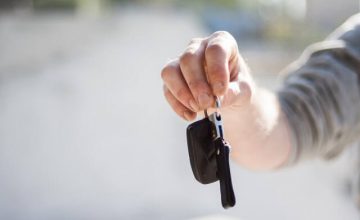Used Car Buying Checklist: 20 Essential Items to Check
Buying a car can be fun and exciting! However, deciding what car is right for you is complicated. One of the first things you need to decide is whether you would like to purchase a new or used vehicle.
There are pros and cons to both, but buying a used car makes the most financial sense for many people. Buying a used car can save you money. They are less expensive, so you can pay them off more quickly. The dealership, registration, and insurance fees are typically lower on a used vehicle, as well.
Used cars are also better for the environment. Nearly 25% of the carbon dioxide a vehicle produces in its lifetime occurs during manufacturing and shipment, so buying a used car reduces the carbon dioxide output into the environment.
Once you’ve found a used car you are interested in, it is important to do thorough research on the vehicle and inspect it so that there are no surprises after you buy it. Here is a checklist of 20 questions to ask and items to check when buying a used vehicle.
Used Car Buying Checklist
Vehicle History
When you are looking at purchasing a used vehicle, you want to know as much about the vehicle’s history as possible. You may or may not get the answers to these questions, depending on if you are buying the car privately or through a dealership, but they are a good place to start. Most sellers will gladly answer your questions.
- Why are you selling the car?
If you are buying directly from an individual, it’s helpful to know exactly why they are selling their car. Did they decide to upgrade to a newer car? Or is there something about it they don’t like?
- How long have you owned it and where did you purchase the car from?
With a used car, it is important to know how many people have owned it before. Ideally, the car would have only had one or possibly two previous owners, depending on its age. More than that can be a sign of trouble.
- What is the warranty status?
Ask the seller if there is still an active warranty that they can transfer. If so, that’s great! Just make sure the seller takes the steps necessary to transfer it.
- Is the title clear?
A clear title means that, if there was an accident, they did not declare the car a total loss. No matter how well the car has been repaired or how low the price is, it’s usually not a good choice to buy a car without a clear title.
- Do you have the title in hand or do you still owe money on the car?
If the seller does not own the car outright, make sure you both fully understand the process required to transfer ownership to ensure you aren’t liable for their outstanding debt.
- Have you had any accidents with the vehicle?
It is important to know if the car has ever been in an accident and, if so, how bad was it? If it was a minor accident and the vehicle was driven from the scene, that may not be a deal-breaker. If there was major damage, it might be better to look elsewhere.
- Do you have maintenance records, including emissions testing?
It is good to know if the previous owner maintained the car regularly and many states require vehicles to pass emissions tests. If it didn’t pass emissions, consider having the issue fixed as a condition for purchase.
- Mileage
The average car will be driven about 13,000 to 14,000 miles per year. Divide the total miles driven by the age of the car to determine the car’s average yearly miles. If the car has high mileage, it may have more wear and tear than would be expected.
- Vehicle history report
Another important aspect of confirming the vehicle history is to order a report through Carfax or AutoCheck. Typically, all you need is the VIN number and these reports will let you know if there are any issues with the title and if the vehicle was ever in an accident.
Used Car Vehicle Inspection
When considering a used vehicle, always inspect both the exterior and interior closely.
Exterior
- Rust and paint damage
It is normal for a used vehicle to have some minor scratches or rust patches from normal wear and tear. However, if there are large patches of rust or parts of the frame are completely rusted through, that can be a problem. Paint damage or inconsistencies in the paint color can show that there has been some major repair work.
- Lights
All the exterior lights should be working. Take notice of the color of the plastic housings. The color will fade and yellow with time. If the colors of the plastic housing don’t match, then one was likely replaced.
- Tires
The tires should have an even tread and all four should match. Problems with alignment cause the tires to wear unevenly.
- Engine
Inspect the engine for fluid leaks, corrosion and cracked hoses and belts. You should also check the oil and transmission dipsticks for discolouration. Oil should be light brown and transmission fluid should be pink or red.
Interior
- Upholstery
Check the upholstery for any tears and cracks. Look closely for any stains. Car upholstery repairs can be expensive.
- Odors
When you get in the car, pay attention to any odors. The smell of cigarette smoke can be very difficult to get rid of. Mildew smells indicate that the car has water damage and that the previous owner did not remediate it completely.
- Windows
Each window should work properly and roll down smoothly. If the movement is jerky, something with the window’s mechanics may be faulty.
Test Drive
The last step when considering a used vehicle is to take it for a test drive.
- Warning lights
Do any warning lights stay on when you start the vehicle? If so, that is an obvious sign that something isn’t working correctly.
- Climate controls
Try out both the air conditioner and heat settings. If they don’t work well, there could be an expensive problem to repair, from a defective heater control to a failed air conditioning compressor.
- Brakes
While driving, pay close attention to the brakes. Grinding or squealing can mean rusty rotors or worn-out brake pads. Warped rotors can also cause vibrations when you step on the brakes.
- Steering
During your test drive, take a route that allows you to make turns in different directions. If the car feels like it’s difficult to steer, there could be a problem with the suspension or power steering.
There are many reasons to buy a new car, including cost and environmental concerns. Like any large purchase, make sure you are careful and research your purchase thoroughly and you can find a car that will last you for many years. One of the best ways to purchase a used vehicle is through Savings Club. Learn more here!
Adriano Marques
CEO at XNV






